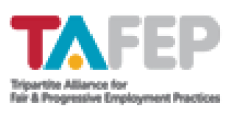More than 19 million employees in the US quit their jobs between April to September 2021 alone, a phenomenon that has been dubbed the ‘Great Resignation’ – and it has spilled over to Asia-Pacific’s shores. Research by Michael Page reveals that 56% of Singaporeans are actively seeking new job opportunities in 2021, while another 36% are passively looking. According to Korn Ferry, 55% of executives believe that employee turnover will only increase in 2022, and multiple other reports are ratifying these statistics, warning employers of the possibility of an avalanche of workplace resignations after almost 2 years of employees struggling through the pandemic.
While this can certainly be seen as a challenge for most HR leaders, this rapid movement in talent also presents a promising and unique opportunity: companies that are able to create a strong value proposition now have access to a larger pool of potential hires and quality candidates than ever before.
Here are 4 strategies to help companies recruit high-performing employees and win the upcoming talent war.
Redefine what great talent looks like
As industries change, so must the criteria for evaluating right-fit talent. Today’s fast-changing environment means that HR teams should relook how they define and develop ‘success profiles’, focusing on which skills, attributes, knowledge and experiences are required for a candidate to thrive in their role and within the company, now and in the future.
These success profiles help recruitment teams adopt a more holistic view of candidate evaluation, guiding them to look beyond traditional criteria (such as hyper-narrow industry experiences, specific educational institutions, or educational qualifications) when shortlisting applicants. This effectively opens up the pool of possible candidates and increases the company’s chances of successful recruitment.
Clearly communicate your employee value proposition
When it comes to being a magnet for top industry talent, employer branding cannot be overlooked. The tumult of the past 20 months has made many people reconsider their work priorities – and in the process of reflecting on their personal purpose in life, many are also re-evaluating their jobs and their employers. What employees really want in the future of work is great culture and a sense of purpose, and companies need to meet these expectations, or risk losing talent to competitors.
One key thing companies can do is craft and communicate a strong employee value proposition. An employee value proposition defines the promises made to the employee regarding their experience and benefits with the company, and typically encompasses:
- The company values, purpose, and culture
- Leadership, and what sort of relationship employees can expect with their managers and teams
- Developmental opportunities and career progression afforded by the role
- Rewards, including intangible benefits like work-life balance
Source talent locally and from non-traditional channels
Not just for 2022, looking outside of traditional channels to tackle talent crunch is one of the most powerful ways to expand potential candidate pools for the long term. Strategies include building targeted partnerships with educational institutions, leveraging social media platforms other than LinkedIn (such as Instagram or Facebook) to strengthen employer branding and engagement, and considering non-traditional work arrangements such as remote hires, temporary contractors, or gig workers.
Adopt a people-first approach to hiring
In a Korn Ferry survey, 75% of candidates said they would not accept a job offer if they had a bad experience during the interview process. Creating better experiences for everyone involved in the hiring process – from candidates to hiring managers – is key to securing talent in 2022 and beyond. To develop a strong people-first approach to hiring, it’s important to ask:
- Have we designed every stage of the candidate journey with candidate experience in mind?
- Which talent acquisition processes can be streamlined?
- How can we ensure that the talent acquisition process is fast, fair and inclusive?
As the talent landscape changes, so must your talent acquisition model
Putting people first should be at the core of the hiring process. But with so many digital tools available to analyse, sort and evaluate candidates today, solely based on their CV, it has become all too easy to neglect the ‘human’ part of ‘human resources’. That’s not to say that technology is all bad – done right, digital recruitment can help bridge physical distances and expand talent pools beyond geographical boundaries.
Most importantly, to win the upcoming talent war, HR teams need to take a more strategic approach to talent acquisition and workforce planning – not just plugging the gap for now, but anticipating and preparing for future talent needs as the organisation continues to grow.







